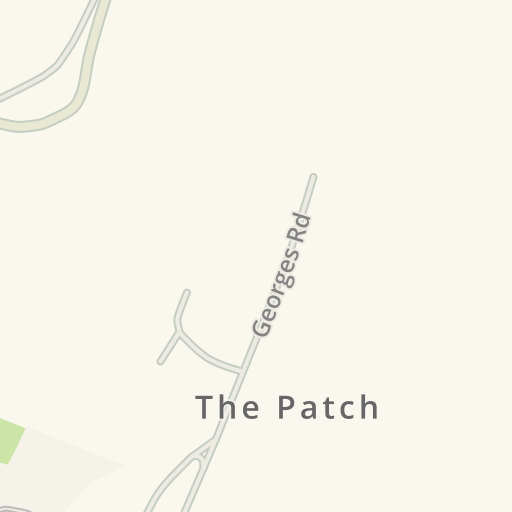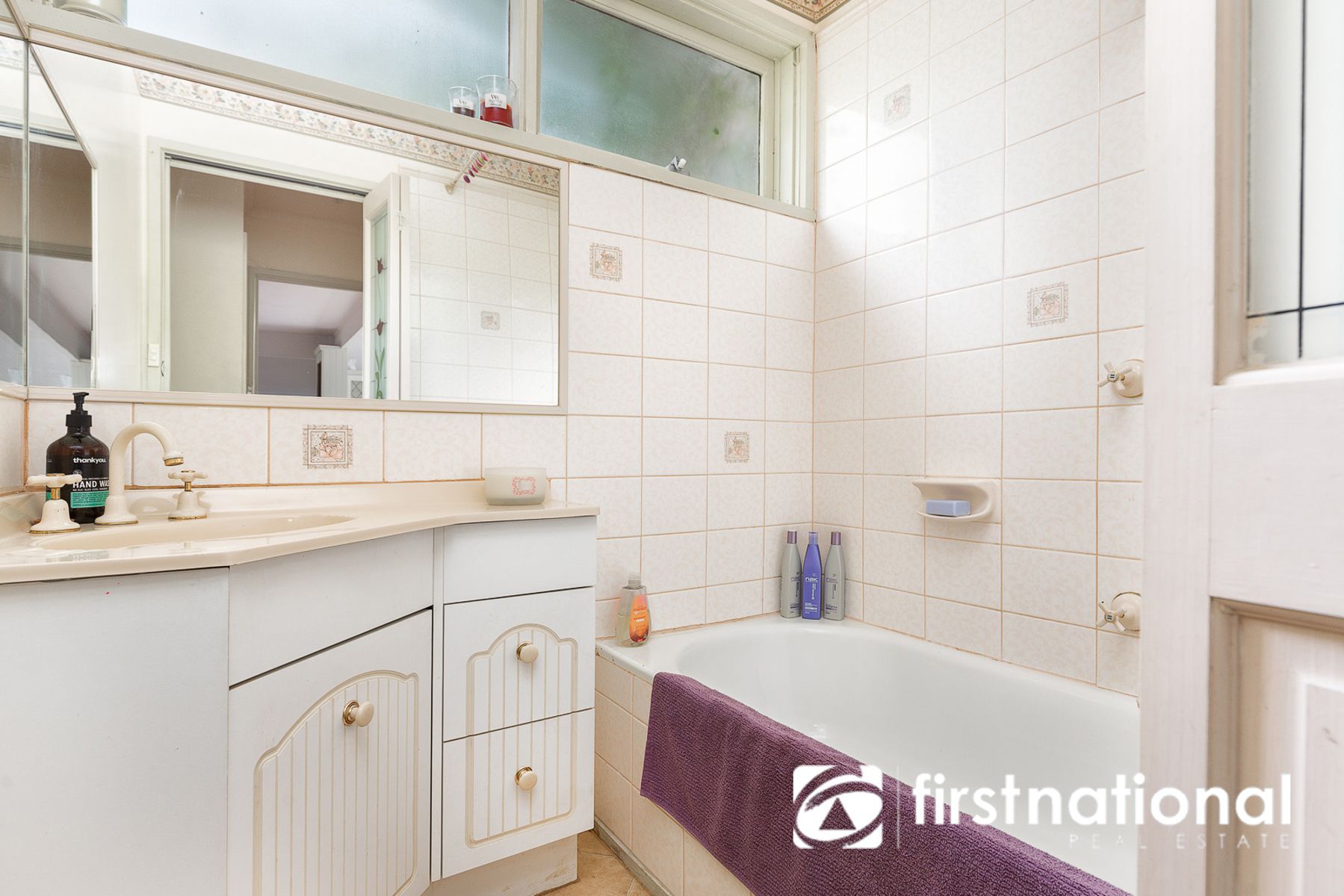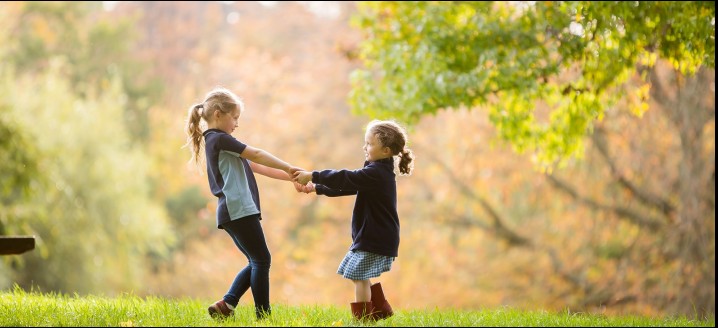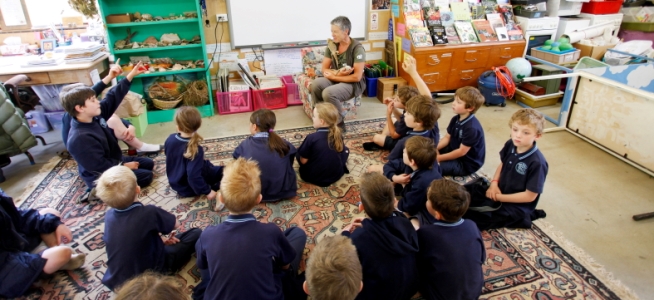First, Very Important: This PTE Patch 6.0 is not a full patch, this is only an update for PTE Patch 5.1. So you must first download and install the PTE Patch 5.0 then PTE 5.1. Check my previous article to install the PTE 5.0 here Patch PTE 5.0: Download + Install. And check PTE article to install PTE 5.1 here Patch PTE 5.1: Download + Install. The Patch Primary School – Student Dress Code Recognised Uniform Items – September 2016 The colours of the school uniform are NAVY blue and SKY blue. Only clothing in these colours is accepted as school uniform. Summer and Winter uniform items are prescribed below. However students can wear any combination of uniform items that they choose.
Play-Based and Personalised Learning for Preschool to Year 8
The Walker Learning Approach is the first major Australian based total and holistic pedagogy (Preschool to Year 8) to be designed and implemented.
The WLA is based upon decades of research about play-based and personalised learning and social constructivism. It is not a program or an inquiry model sitting discreetly or separately from other curriculum areas. It is a total approach to teaching and learning which combines the need for children to be active participants in their learning (through hands-on and creative exploration and investigation) which sits alongside formal instruction. There is explicit teaching and development of not only literacy and numeracy skills and knowledge, but also the range of vital social, emotional and life skills.
The Walker Learning Approach is the first pedagogy to be designed for Australian schools, successfully providing teaching and learning which:
personalises and engages students in active learning alongside explicit and formalised
instruction.is culturally and developmentally appropriate across all demographic regions of the country
including remote indigenous communities of Arnhem land to elite independent
schools.
The Walker Learning Approach
Compatibility with National Early Years Framework and Australian Curriculum
The Walker Learning Approach is an Australian designed teaching and learning approach
(pedagogy) that authentically personalises learning and is developmentally and culturally
appropriate. Learning is real, relevant and meaningful for all children regardless of their age,
culture, family context, socioeconomic background or geographical position. The WLA has been developed over 20 years using an action research model. It places the child at the centre and utilises developmental psychology and biology alongside cultural and environmental influences as its pedagogical platform and the basis for practical application across the Australian setting.
International research highlights that educating children requires a systemised approach that embraces family and community (Burnham et al 2007, Otero et al 2011). The WLA is incorporated in a systems based model for the education of the whole child (birth to 12 years) through theories of practice, parent education, empowerment and inclusion, teaching and learning at school, and establishing and sustaining links and networks between family and community. Within this systems model the WLA provides a seamless transition from childcare to preschool, to early and upper primary school and beyond.
Walker Learning Approach
Fact Sheet
Reporter and Photographer Roles - First Three Years of School
The Reporter and Photographer roles are very important integral part of the WLA pedagogy.
These roles need to be engaging, intentional, fun and special for each child. The same tasks should not be regurgitated day after day with little regard for the learning intentions or the individual child.
This fact sheets provides information about how to intentionally determine the reporter and
photographer roles and presents a variety of ideas for the roles.
Sometimes they can be teamed up to work together, or they can each have their own roles.
The key intentions of the reporter (and photographer) role during investigations for children across the first three years of school include:
Facilitating children’s social engagement and interactions with their peers (particularly with
those who they may not normally associate with)
To extend thinking and problem solving skills in relation to finding evidence and examples
of specific areas of learning that are linked to current areas of curriculum being learned across the day
To provide additional opportunities to extend and link tools and skills in literacy and numeracy as ways of reporting
To include aspects of technology as a means for reporting and recording
To personalise the role in order to scaffold and extend and build upon each child’s skill and interests
To provide opportunities for building self esteem and resilience.
Walker Learning Approach
Fact Sheet
Creating Engaging Centres in play and personalised learning

“Open” and “Closed” Experiences
Some of the key goals for children’s learning is to promote in them the ability to think laterally and creatively. To be able to self initiate, to explore the properties and elements of things, to problem solve, to take risks, to think deeply, to construct ideas and meaning, to utilise their own understandings and discover new ones, to become interested in endless possibilities and opportunities and to become increasingly intrinsically motivated to learn, to find out, to try, to have a go and to develop resiliency.
An important aspect of the learning environment is to ensure that children have the opportunity on a regular basis to construct, to create, to explore and investigate in ways that are purposeful, planned, intentional and robust by the teacher and specifically, carefully and strategically set up in ways that foster and develop skills such as problem solving, self initiation, deep level thinking, taking risks,constructing meaning and developing a range of additional skills.
Through play based curriculum, the nature of how and what resources are established, set up,displayed and provided for the children is extremely important.
There are two general terms that can be used to define how technically an authentic play based curriculum learning environment and centres can be set up (or not set up) to promote the above skills.
These terms are known as either “open” or “closed” experiences. Explanations of open / closed experiences for the purposes of this fact sheet are related to the investigations sessions and the children’s own discoveries and use of resources.
Rich print around the room, children’s own writing, texts, posters, labels, the richness of literacy and numeracy, oral language, conversation, children’s own planning and thoughts and ideas will fill the learning spaces every day.
Your own learning intentions that are displayed each morning and on the parent information board along with the focus children and reporter and photographers tasks all provide many opportunities for intentional and purposeful links back to literacy and numeracy.

Creative and open-ended learning centres are an integral and essential element of authentic play based curriculum. Where and how we scaffold, make the links to curriculum areas, skills,literacy and numeracy is through our planning, our tuning in and reflection and our work with the children during investigations. Not through setting up closed activities, which inhibit their own creativity, imagination and thinking.
WLA Education Research Project: Planning and Delivering Immersion
It is exciting to see such engagement and learning through wonderful Education Research Projects (ERPs) being undertaken by children in Years 3 to 8 across the country. Congratulations to theteachers who have developed their skills and knowledge about personalising learning through the ERP.
A common question we are asked by teachers early in their “ERP journey” is how much immersion do we implement and what does it look like? So here’s a fact sheet to answers those questions and a few related issues.
What is Immersion in the WLA ERP?
Immersion is planned and conducted by the teaching team to engage the students in a rich range of experiences and exposure, facts and information about the key learning intentions and subject focus.
It may include:
Incursions
Excursions
Videos
Texts
Activities
Clinic Groups
Presentations from teachers, professionals and/or community members
Whole class instruction
Integrated instruction/curriculum in other subject areas (ie Numeracy, Literacy, Arts)
The goal for a successful immersion in the ERP is designed to ensure that any particular or
specific information or outcomes that are deemed necessary for the particular context or class are covered and learned in an engaging way.
WLA (Years 3-8)


Communication Boards: Intentions / Set Up / Operation
The communication board is an integral aspect of the Walker Learning Approach that facilitates student engagement and empowers students to have greater ownership of their learning.
The communication board is dynamic and integrated into all aspects of daily learning and activities. It has a number of key intentions and symbolically represents the core elements of the WLA philosophy: it is far more than a static, stand-alone notice board.
Children enjoy using the communication board and regularly make comments such as:
- We feel like we are being trusted more
- We feel more grown up like secondary students
- We like knowing what is happening during the day
- It’s good being able to see who has been affirmed and why they were affirmed.
- It’s great being able to add to the class meeting agenda.
Key Intentions for the Communication Board
To build children’s:
- Independence
- Organisation skills
- Time management.
To assist with:
- Pro social skills
- Interactions
- The ritualization of commencing a day together
- How to public affirm each other
- To meet with the teacher informally at the commencement of each day
To have time to:
- Consider and reflect on issues of the community or world for discussion at class meetings
- To have opportunity to opt in to clinic groups or to offer to conduct an optional clinic group
- To be updated with daily notices and events of the class and school community
A Successful Class Meeting
Strategies and Tips
The WLA Class Meeting is one of the most popular and empowering elements of the approach.
Children having the opportunity to learn and discuss community and world issues outside their own world expand their capacity to understand and accept the views and perspectives of others. It also helps in creating a more tolerant and respectful community.
The Key Intentions Underpinning a Class Meeting
Expanding children’s minds beyond the immediate and egocentric concerns of peers,
arguments and conflicts between themselves into wider community and global issues
Assisting children to understand and accept that people’s views, perspective and values may differ from their own and these can be expressed, explored and discussed without personal insults
Empowering the voice of the child other than that of the adult
Providing leadership opportunity through chairing and leading a Class Meeting
Providing practice of responsibility and summation of key points through the recording role
Providing opportunities for children in speaking, listening, contributing and meeting procedures
The Learning Environment pdf
Parent Affirmation

Download The Patch Ps Vic Edu Au Free Fire
Patch PTE 2.0 Updates
The Patch PTE 2.0 is released now for the PES 2017 game. The Patch PTE 2.0 was released on the 31/10/2016 as the second patch for PES 2017. No need for previous PTE patch 1.0 because this Patch PTE 2.0 includes previous patch already (AIO). These are the full updates included in the Patch PTE 2.0:
- Full Bundesliga fully licensed (Squads, kits, managers, lineups and tactics).
- New Bundesliga players information – All stats are converted from FIFA 17, except the players that featured in PES 16 (although we updated some of them).Accessories and boots updated for all players, all faces edited in-game and some real faces models added. Physical attributes edited (arms length, chest measurement, etc) for all players too, to give a more detailed look, this way, they dont look all the same. We have edited some players celebrations and movements(like free kick) too, more players too be updated in next versions of the patch.
- New Bundesliga kits information – Includes 3rd kits, combinations, euro versions and real fonts and numbers
- Updated kits for Hull City, Porto, Barcelona, Celta de Vigo, Real Madrid, Sevilla, Valencia, Juventus, Milan, Sassuolo, Bayern Munchen, Schalke, Colombia.
- Fixed fake players names in Brasileirão.
- New Added/updated adboards.
- Added the aerial view for Camp Nou.
- Updated managers for all leagues on the game based on the KONAMI Live Update.
- Latest KONAMI Live Update implemented
- Compatible online (Don’t forget to apply the Online Mode in the selector)
Previous Updates of Patch PTE 1.0 (included)
Check this Facebook link to watch screenshots of the new kits and faces that are added in the Patch PTE 2.0: PTE Facebook link.
Download Patch PTE 2.0
To download the Patch PTE 2.0 you need to choose first between 3 Zippyshare or 3 Mega links (3 links each link is 170 MB). Mega links are usually for people who don’t have Internet Download Manager (IDM), and Zippyshare links are for people who have IDM. To download IDM check the download link below (30 days trial).
You need to open the link and wait 5 seconds (you will see the timing in top right corner of the browser), and then you click on “Skip Ad”. you keep doing the same every time until you reach the Download links of the Patch PTE 2.0 .
► Patch PTE 2.0 Download Links:
Download The Patch Ps Vic Edu Au Free Download
▷ 1 Mega Link 1
▷ 2 Mega Link 2
▷ 3 Mega Link 3
(OR)
▷ 1 Zyppishare Link 1
▷ 2 Zyppishare Link 2
▷ 3 Zyppishare Link 3
► Download IDM ( 30 days FREE Trial)
Install Patch PTE 2.0
To install the Patch PTE 2.0 please follow my YouTube Tutorial below very carefully to avoid errors. If you face any error please try installing again the Patch PTE 2.0 following my video steps and carefully read the texts written in the video below:
PTE Patches proved to be the best Patches for the Pro Evolution Soccer (PES) games, simply because the PTE Team work on the Quality more than Quantity. So special thanks for PTE Patch team for this second amazing Patch PTE 2.0 for PES 2017.
Patch PTE 2.0 Offline/Online Modes
The PTE Patch 2.0 is compatible with both Offline and Online Modes. You need to run the PTE Patch program selector as Administrator and then click on “Patch Modes”. If you want to play with full Bundesliga and new added teams then you must activate the “Offline” mode then click “Apply”. If you want to play friendly Online matches with all PTE patch features (Correct logos and correct names..) then you must activate “Online Licenced”. But if you want to play “myClub” online matches then you must activate the “Online Default” mode.
You should always turn off “Live Updates” as i showed in the tutorial video above. If you don’t turn off “Live updates” then you can’t play with added teams like “Bayern Munchen”.
Patch PTE 2.0 Gameplay (Offline)
The PTE Patch 2.0 is compatible with Online and also offline (switch in PTE program). I recorded an Offline PES 2017 match using this Patch PTE 2.0 between “Bayern Munchen” and “Barcelone”. Also i will show you the best trick to score Penalties in PES 2017. Watch this video below that shows the major highlights of the Offline match:
► Credits:
Konami, PES Logos, RJPR, zlac, Jenkey, Fruits, -InMortal-, cRoNoSHaCk, Maritimo,
4N63L, ZAHIN, GgBlues, sortitoutsi (managers mini faces), davfanpes, Sarjono, supalids,
sxsxsx, Dannythebest, Hawke, Wygno, maxi534, A.Mussoullini, mota10 – stavrello7 – NemanjaBRE – Sami Ze.
This is the PTE Patch Blog link: http://ptepatch.blogspot.pt/ – Frequently Asked Questions – F.A.Q. – About PTE Patch.
